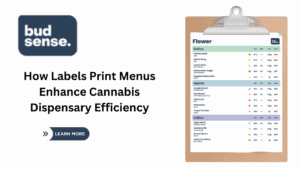Health insurance plays a pivotal role in ensuring financial stability during medical emergencies. As healthcare costs continue to rise, individuals and families are increasingly turning to health insurance for protection. However, affordability remains a significant concern, especially when it comes to the taxation component of premiums. In India, Goods and Services Tax (GST) is applicable on health insurance policies, and this has a direct bearing on the cost borne by policyholders. This article examines whether reducing GST health insurance could enhance affordability for buyers and explores the broader implications of such a move on the insurance sector and GST returns.
Understanding GST on health insurance policies
Currently, health insurance premiums in India attract 18 percent GST. This rate is the same as that applied to many luxury goods and services, which has often sparked debate among industry experts and policyholders. GST Health insurance, being a necessity rather than a luxury, has been viewed by many as deserving of a lower tax rate to promote inclusivity and greater penetration among the population.
The GST component increases the total cost of the premium. For example, a policy with a base premium of Rs. 10,000 would cost Rs. 11,800 after adding the applicable GST. This additional financial burden can discourage individuals—especially those from lower or middle-income backgrounds—from purchasing or renewing their policies. It also impacts senior citizens, who generally pay higher premiums due to age-related health risks.
Impact of high GST on health insurance adoption
The imposition of high GST health insurance policies affects their affordability and accessibility. For many households, health insurance becomes a financial stretch, especially when combined with other household expenses. As a result, individuals may opt for lower coverage amounts, longer waiting periods, or even discontinue their policies altogether.
A reduction in GST could encourage more people to invest in health insurance, thereby increasing policy volumes and aiding the government’s vision of financial inclusion through insurance penetration. It would also allow insurers to offer more competitive pricing while maintaining policy features, thus benefiting both consumers and insurance providers.
Moreover, increased participation in the health insurance ecosystem could lead to more consistent GST returns from a larger base, potentially offsetting revenue concerns from reduced tax rates.
Would lowering GST make health insurance more affordable
Yes, reducing GST health insurance would directly reduce the out-of-pocket premium cost for policyholders. A lower tax rate, such as 5 or 12 percent, would significantly ease the financial burden on families, especially those with elderly members or chronic illness concerns.
By lowering the effective cost, health insurance becomes more appealing to first-time buyers, especially those in rural and semi-urban areas. This aligns with the broader public interest, as a higher number of insured individuals reduces the dependency on public healthcare systems and out-of-pocket medical expenses.
The cost savings from reduced GST could be reallocated by buyers towards add-on covers, critical illness riders, or increasing their sum insured—thus offering better protection without increasing expenditure. Over time, this could improve overall healthcare preparedness across various income groups.
Link between GST reduction and GST returns
The term GST returns refers to the periodic filings submitted by businesses and service providers under the GST regime. These returns reflect the taxes collected and paid, forming a crucial part of the country’s tax infrastructure. While a reduction in GST rates might initially suggest a decline in government revenue from health insurance policies, the long-term impact could be more balanced.
Greater affordability means higher sales volume. As more individuals purchase or renew policies due to lowered tax rates, the overall GST collection base widens. This increase in transaction volume can sustain or even boost GST returns, albeit from a more distributed payer base. Additionally, it can formalise insurance coverage in sectors that currently rely on out-of-pocket expenses due to cost concerns.
Furthermore, improved affordability could drive cross-sectoral benefits. For instance, higher insurance penetration could reduce the burden on public hospitals and government-funded health schemes, indirectly aiding fiscal stability.
Challenges in implementing a GST rate reduction
While the advantages of reducing GST health insurance are evident, certain challenges persist. Firstly, any rate reduction would require consensus from the GST Council, which comprises representatives from both central and state governments. Policy decisions involving tax rates must balance revenue implications with socio-economic goals.
Secondly, insurers would need to update their pricing structures, policy documents, and digital systems to reflect the new tax rates. This administrative transition could take time and might require temporary coordination between stakeholders, including agents, intermediaries, and regulators.
Despite these logistical challenges, many in the industry believe that the long-term benefits outweigh the short-term adjustments.
Global practices on insurance taxation
In several countries, health insurance either attracts a significantly lower tax rate or is exempt altogether. For example, in some European nations, health insurance is tax-free or attracts minimal taxation due to its essential nature. These practices are in place to ensure healthcare remains accessible to all sections of society.
India, too, has recognised the importance of incentivising insurance purchases through tax deductions under Section 80D of the Income Tax Act. However, reducing GST can serve as an additional nudge towards building a more robust health insurance culture.
Conclusion
Reducing GST health insurance premiums has the potential to make policies more affordable, especially for vulnerable and economically weaker sections of society. Such a move would not only ease the financial burden on policyholders but also encourage broader participation in the health insurance market. This, in turn, could help insurers expand their reach and improve long-term GST returns through a more extensive customer base.
While the implementation of such a measure may involve regulatory coordination and short-term adjustments, the long-term benefits could contribute meaningfully to public health security and economic resilience. Lower taxation on essential services like health insurance could be a step towards inclusive and equitable healthcare access for all.






